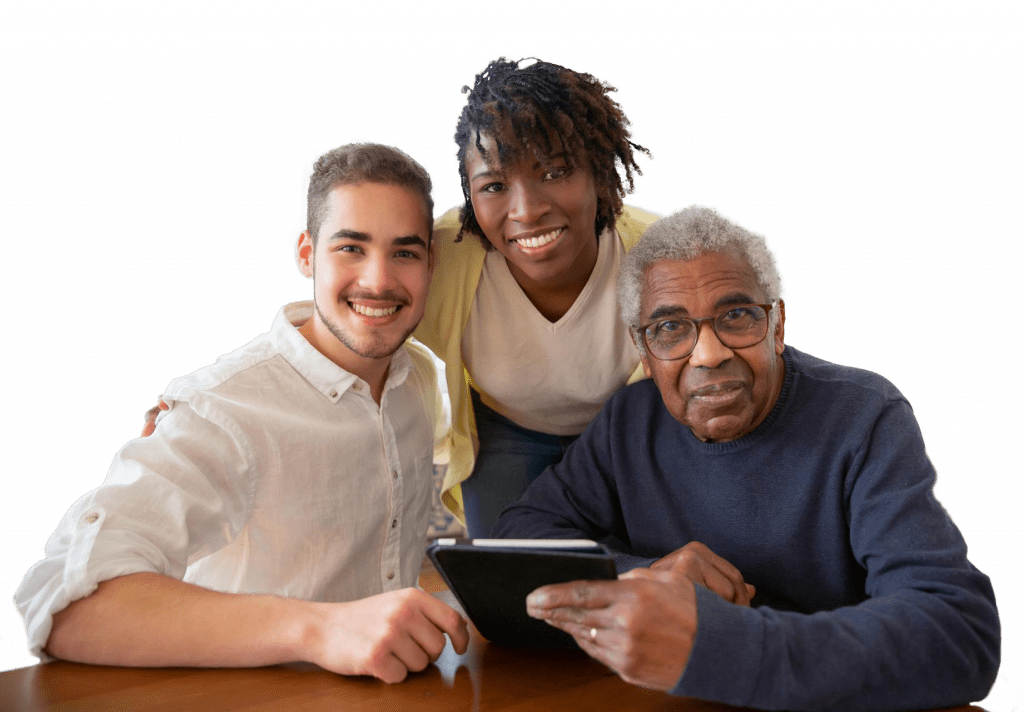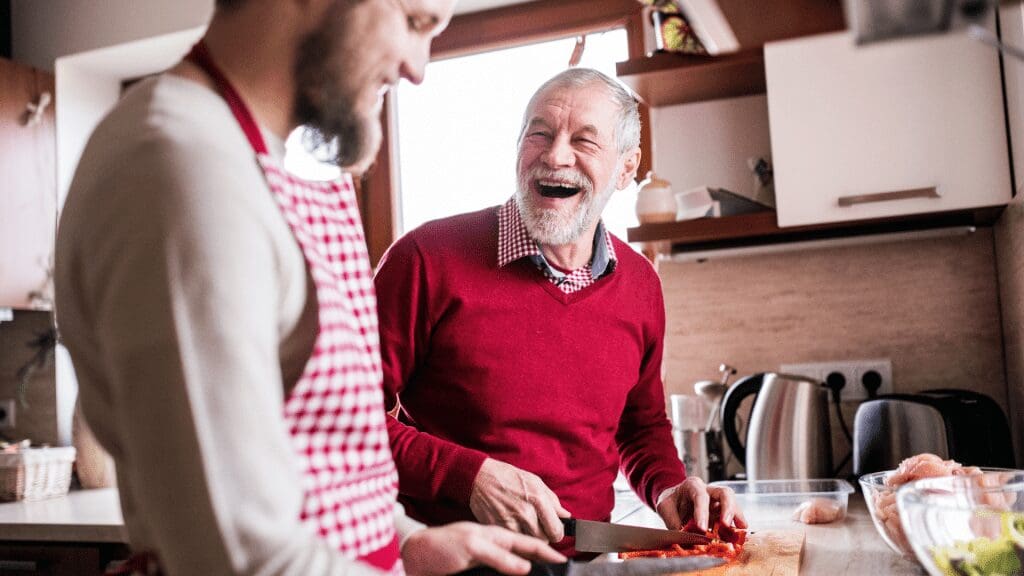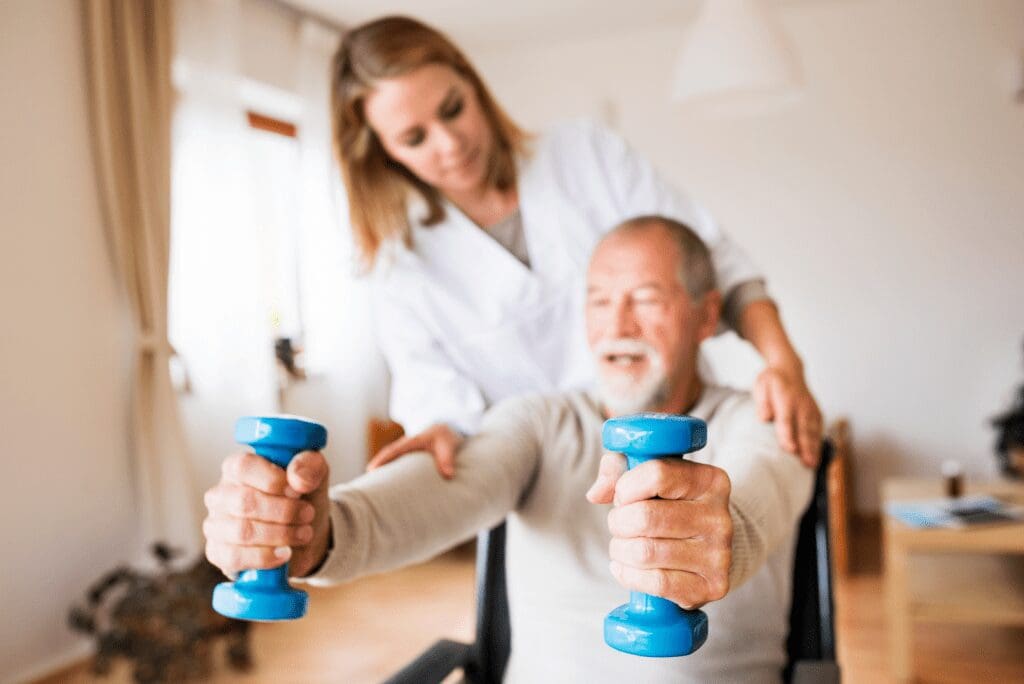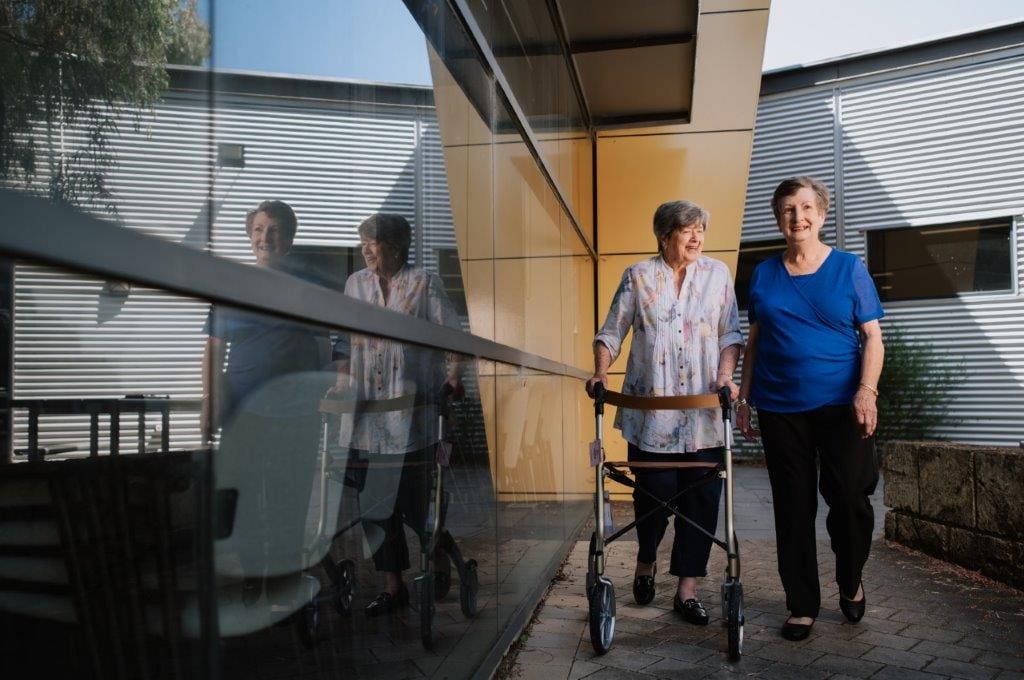Are clients benefitting from Wellness and Reablement?
Find out the benefits of the Wellness and Reablement approach, and how staff and organisations are supporting older people to build their capacity so that “every opportunity really does matter“.
Scroll down for more information.


2019/20 Wellness and Reablement Report Outcomes
The Australian Government recently released the 2019/20 Commonwealth Home Support Programme (CHSP) Wellness and Reablement Report Outcomes. This report, conducted yearly via an online survey to Commonwealth Home Support Programme (CHSP) service providers, aims to measure progress towards embedding wellness and reablement approaches.
Key results self-reported by providers show that most organisations responding to the survey have seen the benefits of reablement approaches and have seen clients regain (even in part) physical or cognitive abilities.
For example, in 2020 83% of providers reported a Wellness and Reablement approach had resulted in clients:
- developing new skills or capabilities
- broadening their outlook and/or participation in society or social connection.
and 22 percent of providers reported that more than 75 percent of its clients developed new skills.
What examples are being reported?
The outcomes report included several self-reported examples across a broad range of service types including:
Domestic Assistance – The client had support with household tasks following injury to the leg. Improved abilities over time, and gradually able to assist workers with tasks. The client no longer requires this service.
Short-term home care services have been implemented for clients post-surgery in which the care workers assist clients and decrease tasks gradually over time until the service is no longer required when the client has regained wellness and independence.
Personal Care – Staff commenced with showering and doing most of the care of the client. With encouragement, the client began to attend some aspects of personal care, and gradually improved in what she was able to do without staff.
The introduction of a long-handled sponge to reach the lower body and back enabled the client to shower independently.




Social Support – individual – Client improved mobility through staff supporting to attend a simple social and exercise program. The client also purchased aids and staff helped use which improved the client’s independence.
The client wanted to complete online shopping but didn’t have the skills to do so. Home Care Worker provided education and went out to assist. The client is now independently completing this task.
Nursing – Teaching clients how to re-dress wounds and self-care for their wounds, nurses can reduce the rate of infections allowing wounds to heal faster and clients are able to return to activities.
Transport – The client received transport services to the new hospital. This helped the client become familiar with transport pick-up. The client gained confidence and once familiar with the hospital layout was able to independently catch a taxi home.
Flexible Respite – The client uses Flexible Respite service to ‘get out and about’ after a significant stroke. The worker is ‘stand by assist’ and having the worker present has given the client the confidence to visit shops. Throughout the year, the client’s mobility and muscle strength have improved.
The client received three months of Flexible Respite services. The support worker took the client to the pool on a weekly basis. The consumer said that her confidence in the water had returned, and her skill level had improved.
Allied Health – Following therapy services, the client was able to walk to the local shop.


Why aren’t more clients benefitting and why aren’t more providers reporting benefits?
The 2019/20 report advises that while there are continued beneficial outcomes for clients across the two years of reporting, the percentage of providers reporting the proportion of clients benefiting still remain low.
So why is this the case when we know that the overwhelming majority of older people prefer to remain in their own homes and communities and that reablement approaches can promote increased levels of independence, autonomy, and well-being, despite the incremental age-related decline?
The broad examples reported by providers above describe how they have worked in a way that optimises a person’s capacity and well-being through activities such as:
- a mobility and exercise program
- through use of a small piece of equipment
- through retraining of an old skill, or learning a new one
- through creative engagement and
- through building confidence
also suggests that implementing wellness and reablement approaches across a multitude of service areas is very achievable.
So, what are the main barriers, and how as a sector can we focus on increasing the percentage of older people showing positive outcomes and improvements in physical and cognitive capacity or social connectedness.
The 2019/20 report details several barriers/challenges reported by providers in implementing a reablement approach. These included the current service delivery model, lack of available funding, workforce issues, funding not allocated where it is needed, and client and carer preferences.


Moving away from task-based care
Considering the barriers and specifically the challenges reported around client and carer preferences, how can providers as stated in The Royal Commission into Aged Care Quality and Safety March 2021 report:
- move away from predominantly task-based care delivery to supports that actively enable and maximise a person’s capacity and health
- place people at the centre of any support and most importantly
- focus on providing support that prevents and delays any impairment of that individual’s capacity to live independently.
Helping people to help themselves is key
How do we help people to help themselves, rather than the more traditional approach of doing things for people that they are having difficulty doing for themselves – to ensure that existing or regaining of lost skills, connections, roles, and abilities are retained all of which are fundamental to people remaining in their own homes and having a good quality of life.
Our top ten recommendations include:
- Understanding the ageing process and science of ageing well as an organisation
- Having an organisational reablement mind set – understanding and enabling the why of reablement
- Having a “hands off” or “stepping back from stepping in” approach to supporting people
- Working short term and intensively with people to help them learn or relearn the skills and confidence to manage daily activities as independently as possible
- Using strength-based support plans
- Setting goals and having measurable outcomes of progress even if they are just small changes – every opportunity does matter
- Staff training and mentoring through the change process
- Using low level assistive technology /equipment
- Positive and strength based communication to clients and carers so they better understand why staff ‘working with’ rather than ‘doing for’ will help them stay stronger and more able
- Telling stories of success
A support workers story – Working as a team
Ending this article with a short story from a support worker seems apt as front-line staff are the most valuable resource to implement wellness and reablement approaches. When front-line staff understand and can implement reablement, the benefits to clients are considerable. Support staff have also been shown to increase their job satisfaction from working this way.
A support worker was once asked what she was thinking when she worked with older people using a reablement approach. She replied that she saw it as ‘help to self-help‘.


I’m helping them help themselves as the more they can do for themselves, the more they will stay mobile, be able to do things, and get out when they want. When I talk to some of my clients, they all say they just want to stay in their own homes and be able to do things. So I try and think and explain how when I’m supporting this person, am I taking away from what they can do for themselves and just creating more problems for them as they slowly lose the skill and interest to do it themselves. Or if by supporting them to do it themselves or if we do it together, I feel I’m really helping them to move more, do more, feel useful and work as a team. It feels good for both of us.
